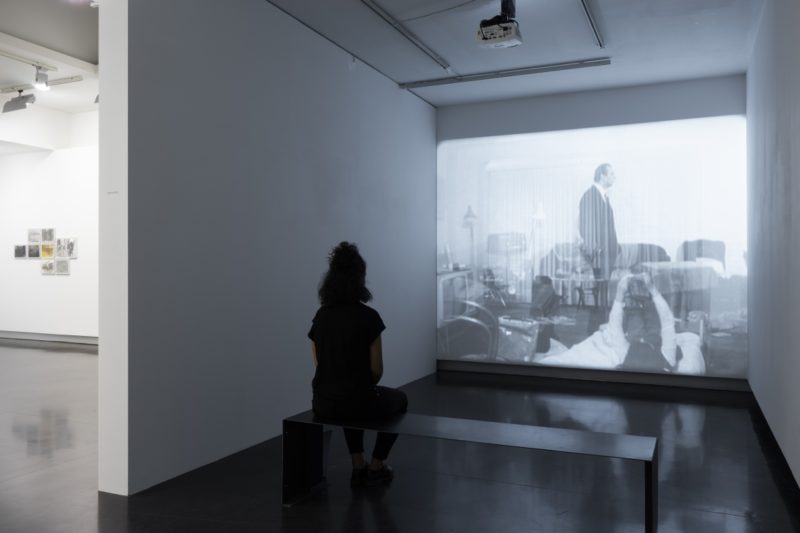1000 Words
City Guides
#6 Paris
Jeu de Paume
1 Place de la Concorde
75008 Paris
+33 1 47 03 12 50
www.jeudepaume.org
Located at the entrance of the Tuileries Garden, Jeu de Paume operates at the forefront of the capital’s photographic scene. Since the arrival of director Marta Gili in 2006, the institution has hosted a range of major retrospectives, celebrating some of the nest photographers of the
20th century such as Ed Ruscha, Cindy Sherman, Joel Meyerowitz, Susan Meiselas and Robert Adams, but also younger artists like Mathieu Pernot, Cyprien Gaillard and Ismail Bahri, as well as writers and thinkers such as Pierre Bourdieu and Georges Didi-Huberman. With each exhibition accompanied by a rich programme of in-house talks and conferences, Jeu de Paume has also extended its internet presence, most notably through the online magazine Le magazine, an invaluable educational source intended to stimulate debate around the role of the image in the digital age.
Maison Européenne de la Photographie (MEP)
5–7 Rue de Fourcy
75004 Paris
+33 1 44 78 75 00
www.mep-fr.org
For over two decades since its establishment, the MEP has been a
key player in the evolution of Paris’ photographic scene, with Jean-Luc Monterosso, founder of the now legendary Mois de la Photo in 1980, directing the gallery until May 2017. While the MEP has somewhat lost a bit of its aura in recent years – the curse of any institution led too long by the same personnel – the fairly recent appointment of British curator Simon Baker, former Curator of Photography and International Art at Tate in London, as the gallery’s new director announces a promising new era.
LE BAL
6 Impasse de la Défense
75018 Paris
+33 1 44 70 75 51
www.le-bal.fr
After seven years as a Director of Magnum Photos, Diane Dufour co-founded LE BAL in 2010 with the vision of providing Paris with a contemporary space dedicated to documentary photography. LE BAL serves as a compelling photographic platform, a place to discover visual storytellers working in locations across the globe, particularly in the Middle East. Critically engaged, LE BAL doesn’t shy away from explicitly political and conceptual work, such as that of Lawrence Abu Hamdan, Samuel Gratacap and Mohamed Bourouissa, including in the mix giants like Mark Cohen and Chris Killip. Offering exhibitions that boast innovative, scenographic design and a rich educational programme to boot, LE BAL occupies a bold position in the field of documentary image-making and dissemination.
Galerie Les Filles du Calvaire
17 Rue des Filles du Calvaire
75003 Paris
+33 1 42 74 47 05
www.fillesducalvaire.com
Directed until recently by curator extraordinaire Christine Ollier, the Galerie Les Filles du Calvaire is resolutely contemporary. Though not exclusively dedicated to photography – or perhaps precisely because it is not – the gallery makes a large contribution to today’s conversation about the medium. Amongst the works represented by the gallery are the strange constellations of the artist Thierry Fontaine, the raw bodies of Antoine d’Agata, the black-and-white diary of Yusuf Sevincli, and, more recently, the feminist investigations of Laia Abril. The curator’s voice also expands beyond their exhibitions since the gallery organises in-house discussions as and co-produces numerous exhibitions shows throughout France and internationally.
Centre Photographique d’Ile-de-France (CPIF)
107 Avenue de la République
77340 Pontault-Combault
+33 1 70 05 49 80
www.cpif.net
Located in the outskirts of Paris, the CPIF embodies the cultural dynamism of the French suburbs as well as the appropriation of local heritage by art institutions. Set in the barn of an old farm, the CPIF is devoted to conceptual photography, from the study of chaos by David De Beyter to Clare Strand’s mise-en-scene of the unexpected. Its programme reflects an ongoing preoccupation with the intersections between photography and the moving image, as well as digital interventions in the medium. A space for endless experimentation, the CPIF also offers two residency programmes – one which explores production, while the other focusses on research and creation. ♦
Image: View of the exhibition Sigmar Polke’s Photographic infamies at LE BAL, 2019. Photo:Mathieu Samadet. Courtesy: LE BAL

